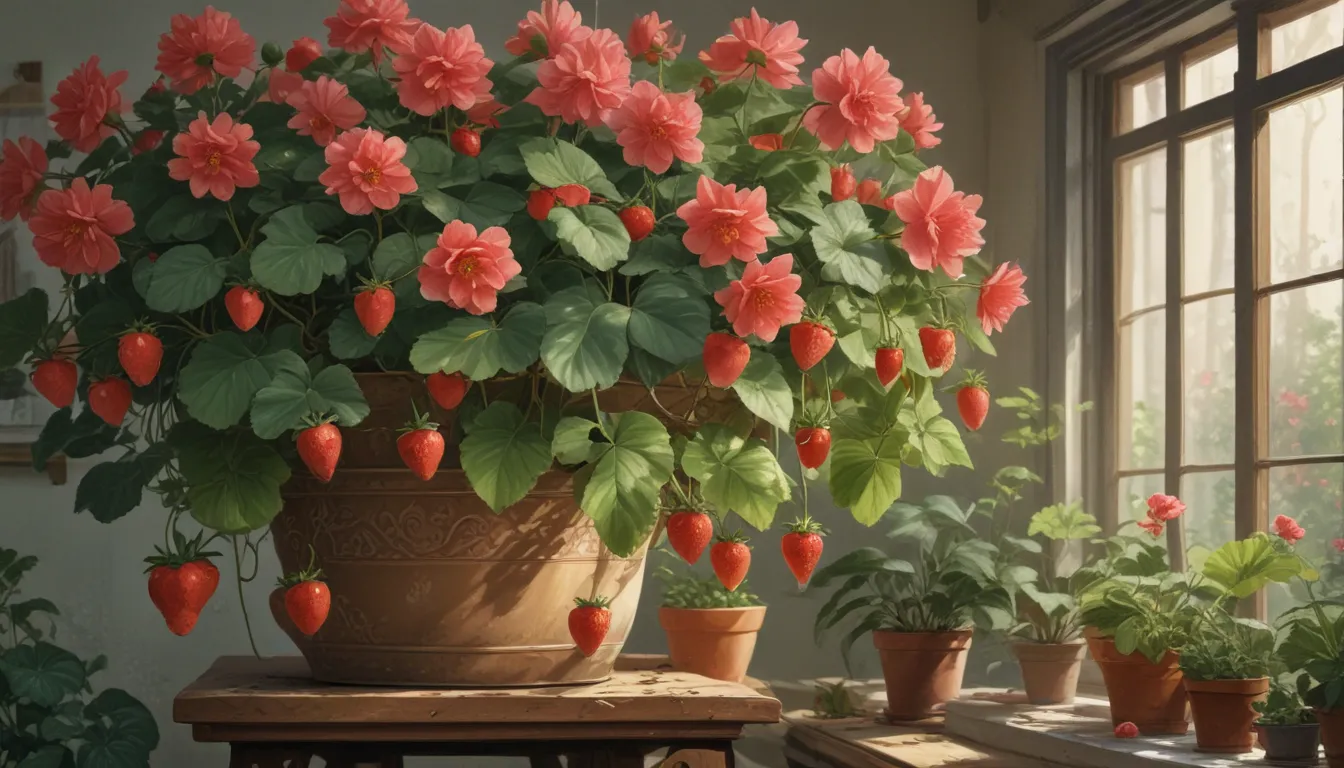The Ultimate Guide to Growing and Caring for Strawberry Begonia Houseplants

Strawberry X-Treme, Strawberry Flood, and even Deana Carter’s Strawberry Wine – it’s safe to say that adding “strawberry” to anything instantly elevates its appeal. And the strawberry begonia is no exception. With its rosettes of leaves, delicate flowers, and charming plantlets, Saxifraga stolonifera is truly a sight to behold.
But in order to have this stunning houseplant in your collection, you’ll need to master the art of growing it. Fear not, as this comprehensive guide is here to walk you through everything you need to know about cultivating and caring for your strawberry begonias.
What You’ll Learn
- What Are Strawberry Begonias?
- Cultivation and History
- Propagation
- How to Grow
- Growing Tips
- Maintenance
- Cultivars to Select
- Managing Pests and Disease
- Best Uses
- Quick Reference Growing Guide
What Are Strawberry Begonias?
Despite its misleading name, the strawberry begonia is neither a strawberry nor a begonia. Belonging to the Saxifragaceae family, it boasts dark green leaves with silver markings and reddish undersides. In the spring, it blooms with stunning flowers that add to its ornamental value. Originating from China, Japan, South Korea, and Taiwan, the strawberry begonia was introduced to the West in the 18th century.
Cultivation and History
Saxifraga stolonifera thrives in USDA Zones 6 to 9 and can adapt to various environments. Its unique growth habits make it a popular choice for both indoor and outdoor gardens. It was originally brought to the West by Dutch traders and has since gained recognition for its ornamental beauty.
Propagation of Strawberry Begonia Plants
To expand your collection of strawberry begonias, propagation through plantlets is the way to go. These plantlets are miniature versions of the mother plant, connected by slender stolons. By following a few simple steps, you can easily propagate more strawberry begonias in your own home.
From Plantlets
When plantlets develop at least five mature leaves, it’s time to separate them from the mother plant. By submerging the stem in water or planting it directly in growing media, you can encourage root growth in the new plantlets. A well-ventilated container with filtered water will promote healthy root development.
How to Grow Strawberry Begonias
Cultivating fully grown strawberry begonias is a straightforward process. By providing the right conditions, you can ensure that your plants thrive and produce beautiful blooms.
Climate and Exposure Needs
Maintaining temperatures between 50 to 70°F and providing indirect sunlight are essential for the optimal growth of strawberry begonias. Proper watering and a suitable growing medium will also contribute to their overall health.
Growing Media Needs
A balanced mix of sphagnum peat moss and perlite will create the perfect environment for your strawberry begonias. This combination retains moisture while allowing for proper drainage, ensuring that your plants receive the right amount of water.
Water and Fertilizer Needs
Regular watering and fertilizing during the growing season are crucial for the health of your strawberry begonias. Adjusting the watering frequency and fertilizer application based on the season will help maintain their overall well-being.
Growing Tips
- Bright, indirect light exposure is critical.
- Make sure to provide excellent drainage.
- Irrigate whenever the top inch of soil feels dry to the touch.
Maintenance
Aside from occasional pruning and repotting every few years, strawberry begonias require minimal maintenance. By following simple care guidelines, you can enjoy the beauty of these plants with ease.
Strawberry Begonia Cultivars to Select
While the standard strawberry begonia is a sight to behold, there are also unique cultivars that offer a different aesthetic appeal. Varieties like Maroon Beauty and Variegata provide a fresh twist on the classic strawberry begonia, adding diversity to your plant collection.
Managing Pests and Disease
Despite being relatively low-maintenance, strawberry begonias can still fall prey to pests and diseases. Being vigilant and proactive in addressing these issues can help protect your plants and preserve their health.
Pests
Common pests such as aphids, mealybugs, slugs, and spider mites can pose a threat to your plants. By identifying and treating infestations early, you can prevent further damage and protect your beloved strawberry begonias.
Disease
Root rot is a potential issue that can affect strawberry begonias if not managed properly. By practicing proper watering and using well-draining soil, you can reduce the risk of root rot and ensure the longevity of your plants.
Best Uses for Strawberry Begonias
The mat-like growth habit of strawberry begonias makes them an ideal addition to hanging baskets or clustered with other houseplants. Their trailing plantlets provide a unique visual appeal and can enhance the overall aesthetic of any indoor space.
Quick Reference Growing Guide
- Plant Type: Herbaceous evergreen perennial
- Flower/Foliage Color: White/gold to yellow, gray to silver, green, pink, purple to lavender, white
- Native to: China, Japan, South Korea, Taiwan
- Maintenance: Low
- Hardiness (USDA Zones): 6-9
- Tolerance: Cool temperatures
- Bloom Time: Late spring to early summer
- Soil Type: Moist, fertile
- Exposure: Partial to full shade, indirect light
- Soil pH: 6.0-7.0
- Planting Depth: Depth of root system
- Soil Drainage: Well-draining
- Height: Up to 18 inches
- Uses: Containers, hanging baskets
- Spread: 1-2 feet
- Order: Saxifragales
- Growth Rate: Rapid
- Water Needs: Moderate
- Genus: Saxifraga
- Common Pests and Diseases: Aphids, mealybugs, slugs, spider mites; root rot
- Species: Stolonifera
The Strawberry Begonia: A Berry Awesome Plant
As you embark on your journey of cultivating strawberry begonias, you’ll soon discover the joy of caring for these beautiful plants. Their unique growth habits, colorful foliage, and delicate blooms make them a delightful addition to any indoor garden.
So go ahead, bring home a strawberry begonia and watch as its beauty transforms your living space. And if you have any questions or insights to share, feel free to drop them in the comments below!
Looking for more low-maintenance houseplants to enhance your indoor garden? Check out our guides on Aloe Vera, Pothos Houseplants, and Spider Plants for more inspiration on creating a lush and vibrant home environment.
Remember, a house is not a home without a touch of greenery!





